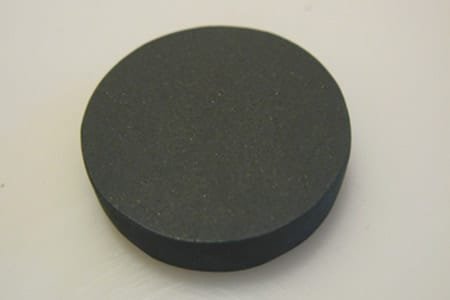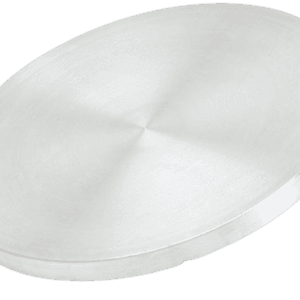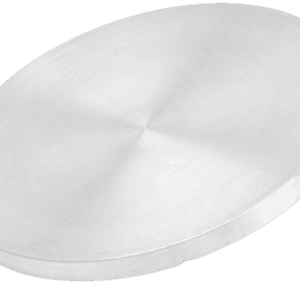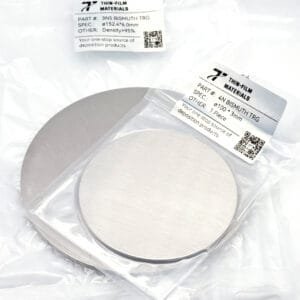| Material Type | Strontium Copper Oxide |
| Symbol | SrCuO2 |
| Color/Appearance | Grey/brown/red, Solid |
| Melting Point (°C) | N/A |
| Theoretical Density (g/cc) | N/A |
| Water Solubility | Insoluble |
| Sputter | RF, RF-R, DC |
| Type of Bond | Indium, Elastomer |
Strontium Copper Oxide Sputtering Targets
TFM offers Strontium Copper Oxide (SrCuO₂) sputtering targets, which are highly valued for their use in the deposition of thin films in electronic and optoelectronic devices. Strontium Copper Oxide is a compound that exhibits unique electrical and optical properties, making it ideal for advanced material science applications. These sputtering targets are primarily used in the fabrication of high-performance thin films and electronic components, as well as superconducting and optical devices.
Key Features and Advantages
- High Purity – TFM provides Strontium Copper Oxide Sputtering Targets with a 99.9% purity, ensuring the deposition of high-quality thin films with superior electrical and optical properties.
- Excellent Electrical Conductivity – SrCuO₂ films are known for their high electrical conductivity and are ideal for applications requiring high-performance electrical conductors or superconductors.
- Optical Properties – The compound’s unique optical characteristics make it useful in the production of optical coatings and photoelectronic devices.
- Customizable Sizes – Available in various sizes to meet the specific needs of both research and industrial applications, from small-scale experiments to large-scale manufacturing processes.
- Stable Performance – These targets provide stable sputtering performance with uniform film deposition, ensuring consistent quality and film integrity across applications.
Specifications
- Purity: 99.9%
- Target Types Available:
- Circular Targets: Diameter ≤ 14 inches, Thickness ≥ 1mm
- Block Targets: Length ≤ 32 inches, Width ≤ 12 inches, Thickness ≥ 1mm
Applications
- Superconducting Materials – SrCuO₂ is widely used in high-temperature superconductors for advanced electronics and quantum computing applications.
- Electronics – Ideal for use in semiconductor devices, capacitors, and transistors that require high conductivity and reliability.
- Optical Coatings – The unique optical properties of Strontium Copper Oxide make it suitable for optical coating applications in laser devices, photodetectors, and solar cells.
- Thin Film Deposition – SrCuO₂ sputtering targets are extensively used for thin-film deposition in the fabrication of thin-film transistors (TFTs), photovoltaic devices, and light-emitting diodes (LEDs).
Manufacturing Process
- Cold Pressing & Sintering – The manufacturing process ensures high density and performance consistency, critical for producing high-quality thin films in sputtering processes.
- Elastomer Bonding – Targets are bonded to a backing plate for improved handling and film deposition uniformity.
- Cleaning & Packaging – Each target undergoes thorough cleaning to ensure it is free from contaminants, followed by careful packaging to protect it from environmental exposure during shipment.
Options
- Custom Sizes – TFM offers a range of custom sizes to fit various application needs, from small-scale research to large-scale industrial production.
- Research and Development – Smaller sizes are available for R&D purposes, enabling experimental testing and prototyping.
- Sputtering Target Bonding Service – For enhanced performance, TFM provides sputtering target bonding services, ensuring better sputtering efficiency and improved film quality.
Industry Impact
Strontium Copper Oxide Sputtering Targets are essential in the development of high-performance electronics, photovoltaics, and optoelectronic devices. With their excellent electrical conductivity, optical properties, and stable performance, these targets are widely used in the production of advanced superconducting materials, thin films, and coatings. TFM’s high-purity targets ensure that the films produced meet the stringent requirements of cutting-edge technology applications in industries such as quantum computing, solar energy, and optoelectronics.





Reviews
There are no reviews yet.